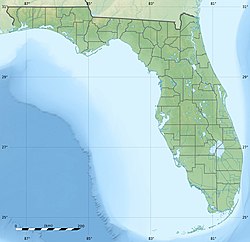| Shoal River Formation | |
|---|---|
| Stratigraphic range: Serravallian (Clarendonian) ~ | |
| Type | Formation |
| Unit of | Alum Bluff Group |
| Underlies | Chochtawatchee Formation |
| Overlies | Chipola Formation |
| Lithology | |
| Primary | Sandstone |
| Other | Marl |
| Location | |
| Coordinates | 30°48′N86°18′W / 30.8°N 86.3°W |
| Approximate paleocoordinates | 31°06′N83°30′W / 31.1°N 83.5°W |
| Region | Florida |
| Country | United States |
| Type section | |
| Named for | Shoal River |
The Shoal River Formation is a geologic formation in Florida. The sandstones and marls of the formation preserve fossils dating back to the Serravallian epoch of the Middle Miocene of the Neogene period. [1] [2]

